Tea Tasting Collection
6 Teas
Selected by Tasting Collection.
Honey Bush Natural
Rooibos Tea
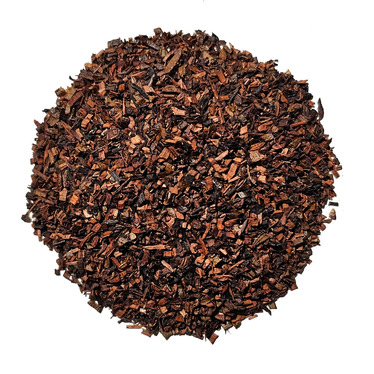
| The Honeybush is liked by bees hence its name. It grows wild in South Africa and is used by the natives for its beneficial properties. There are many similarities from ordinary Rooibos; Honeybush contains no caffeine, is very easy to drink and has a honey-like taste. Use about 2 grams per cup at 90 to 100 degrees and steep for 5 minutes to 10 minutes. |
Irish Breakfast
Black Tea
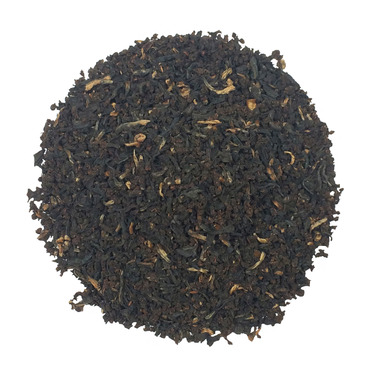
| This breakfast blend consists mostly of rich Assam tea and has a full and very powerful flavor. Highly recommended for the lover of a tea with a spicy and malty (a term derived from the beer brewers) character. Although it is sometimes claimed otherwise, the blackening of the tea leaves is not a fermentation process but an oxidation process. The name Irish was chosen because the Irish have a special preference for very strong blends. This is mainly found in Irish whiskies. To smoothen the strong taste, the Irish often add milk to the tea. |
Green Gunpowder
Green Tea
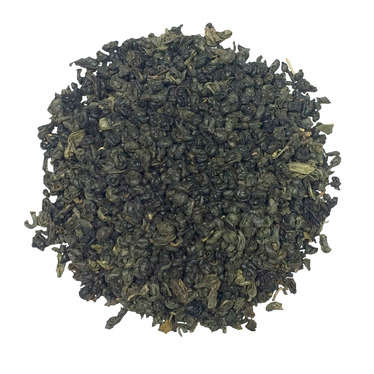
| The green tea China Gunpowder (also known as Zucha or Pearl Tea) has an aroma that is somewhat softer than 'normal' green tea. The tea leaves are slowly dried in rotating drums. This creates a nice ball. The tea leaves used for these tightly twisted balls are of very high quality. In the warm water the small balls open up to form a wonderfully soft tea. |
Kir Royal
Mélange
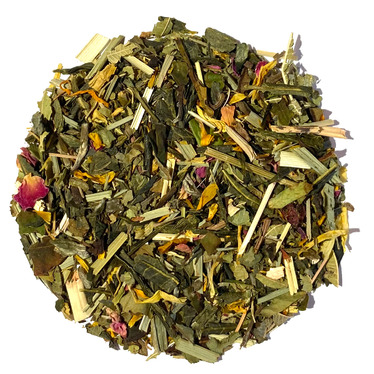
| A blend of green and white tea, Verbene leaf, Lemongrass, Lemon Myrte, black and red berries, rose blossom and sunflower blossom. The Lemongrass and Cassis give this tea a fresh yet fruity flavor with a slight Champagne character. A mellow tea that doesn't easily become aftertaste. Green flavored tea comes into its own when poured with water at 60-80° and allowed to steep for up to 2 minutes. Then the aroma and base tea are in balance. If the tea is steeped longer, the taste will become slightly bitter due to the diffusion of the tannins of the green tea leaf. |
Assam Rembeng
Black Tea
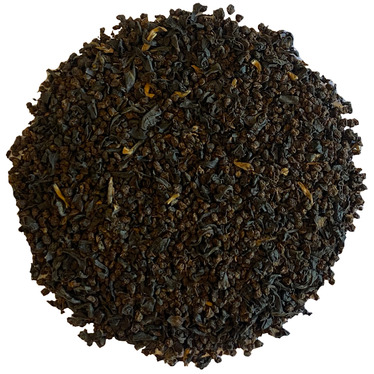
| The Indian state of Assam lies some 200 kilometers east of Darjeeling. From east to west, Assam covers some 600 km. The area has more than 1,000 contiguous tea plantations, making it the largest tea growing area in the world. About half of India's tea products come from this area. In the subtropical climate, it produces mainly black tea with a strong malty flavor. For 1 cup of this tea, take 2 grams and infuse with water at 80 to 95 degrees Celsius. Allow to steep for 2 to 5 minutes. |
Japan Sencha
Green Tea
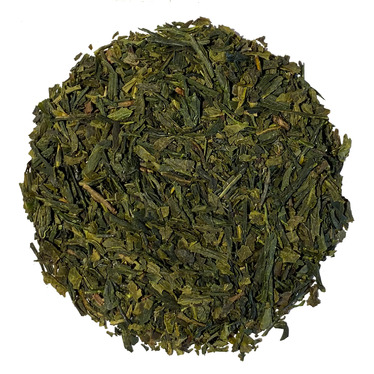
| In the 9th century, the Chinese tea plant found its way to Japan. Monks brought it from China and linked its use to strictly ritualized practices. Green tea as a medium for meditation and religious purposes. Unlike China with its indistinguishable wealth of green tea, Japan produces only a few varieties that build more or less on the Sencha leaf, the Japanese folk drink. The main area is in Shizuoka Province, at the foot of Fujijama. In Japan, only green tea is produced. As in China, the demand for tea at home is very high. Green tea is indispensable from daily life here. For 1 cup, take 2 grams of this tea and infuse it with water to 80 degrees Celsius. Allow to steep for 2 minutes. |
We hope you enjoyed this Tasting Collection.
For more tastings and background information,
please visit www.tastingcollection.com
For more tastings and background information,
please visit www.tastingcollection.com